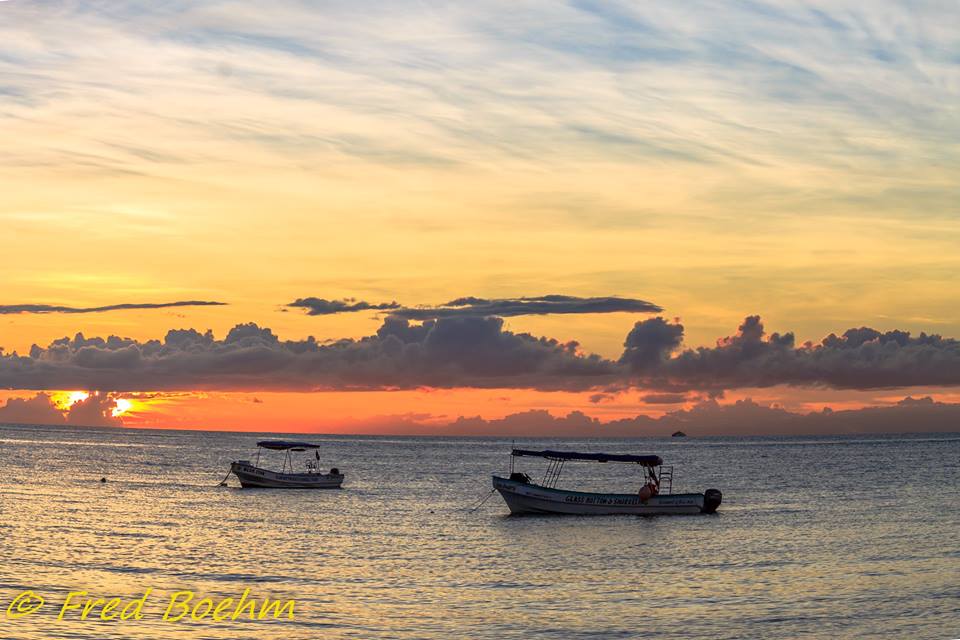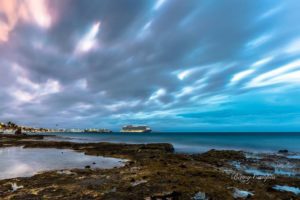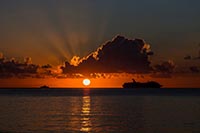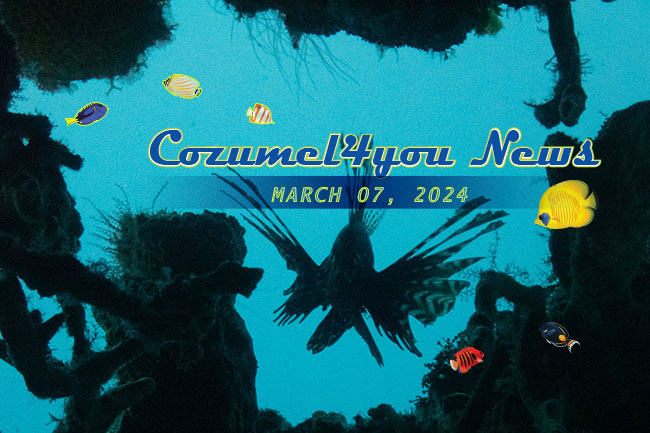
Sahara Dust Makes It’s Annual Summer Appearance to Cozumel
The “Saharan Air Layer” has made it’s annual appearance to the island. During the hot summer months, annually layers of dust particles travel all the way from Africa and wind up in the atmosphere above the Gulf of Mexico.
These dust clouds, which can be composed of particles of iron, silicon, mercury and phosphorus, can travel over 7,000 kilometers, carried by wind currents common during this time of year. Additionally, the dust sucks the humidity out of the air, meaning reduced chance of rain and reduced cloud cover, creating a dryer, hotter climate for those below.

Officials from the Pan American Health Organization (PAHO) have been quick to reassure that this poses no significant danger, although people who suffer from allergies or asthma (or other respiratory disorders) can be affected.
There have also been studies that show that if this dust settles in the ocean it can negatively impact coral reefs, ocean life and contribute to red tide.
On a positive note: those beautiful sunsets we’ve been having? You can expect them to continue as well, as light is deflected by the dust particles in the air.
Nube de polvo del Desierto del Sahara hace su tradicional aparición en verano en Cozumel
La “capa de aire del Sahara ha hecho su aparición anual en la Isla. Año tras año, durante los calurosos meses de verano, capas de partículas de polvo viajan desde África y se depositan en la atmósfera sobre el Golfo de México.
Estas nubes de polvo compuestas por partículas de hierro, silicio, mercurio y fósforo pueden viajar más de 7,000 kilómetros arrastradas por las corrientes de viento habituales en esta época del año. Además, el polvo absorbe la humedad del aire lo que significa una menor probabilidad de lluvia y una menor nubosidad, creando un clima más seco y caluroso para los que están debajo.

Las autoridades de la Organización Panamericana de la Salud (OPS) se han apresurado a señalar que esto no supone ningún peligro significativo, aunque las personas que sufren alergias o asma (u otros trastornos respiratorios) pueden verse afectadas.
También se han realizado estudios que demuestran que, si este polvo se asienta en el océano, pueden tener un impacto negativo en los arrecifes de coral, en la fauna marina, y contribuir a la marea roja.
El lado positivo, ¿ven esas hermosas puestas de sol que hemos tenido? Van a continuar ya que la luz es desviada por las partículas de polvo en el aire.
______________________________
Una ex yanqui de Connecticut quien llama hogar a Cozumel desde hace más de 15 años. Laura escapó al Caribe hace años, desplazándose de una isla a otra dando clases de BUCEO. Se dedicó a perder el tiempo en Jamaica y finalmente se detuvo en Cozumel para pasar unas vacaciones de 2 semanas que aún no terminan. Convenciendo a sus padres que pagaran una elegante universidad privada, obtuvo su título en Periodismo y Laura crea semanalmente Cozumel 4You, medios sociales y artículos promocionales sobre la Isla y también es moderadora en el grupo Cozumel 4 You en Facebook que actualmente cuenta con 25,000 miembros. Fabián, s umuy tolerante marido, desde hace mucho tiempo se resignó a no tener vida privada, pues se ha visto implicado en los diversos proyectos y planes que urde Laura. Son orgullosos padres de diversos perros y gatos rescatados. Mientras contempla su paso a través de la vida en el Caribe mexicano,Laura continúa siendo la pesadilla en la existencia de su muy tradicional suegra mexicana.
- Humane Society Cozumel Pet Week - March 28, 2025
- Cozumel Property Tax & Garbage Taxes - March 28, 2025
- Cozumel 4 You News March2025 - March 28, 2025
An ex-Connecticut Yankee who has called Cozumel home for over 18 years, Laura ran away to the Caribbean years ago, bumped around the islands teaching SCUBA diving, lost some time in Jamaica, and finally stopped in Cozumel for a 2 week vacation that hasn’t ended yet. With a degree in Journalism from a fancy private college she convinced her parents to pay for, Laura writes, edits, and creates the weekly Cozumel 4 You news, social media, and promotional articles about the island, as well as moderates the Cozumel 4 You Facebook group, which currently has over 25,000 members. Her long suffering husband, Fabian, has long since resigned himself to having zero private life, as he’s been involved in her various schemes and plots since his arrival. Proud parents to a variety of rescue dogs and cats, Laura continues to be the bane of her traditional Mexican mother-in-law’s existence, as she muses her way through life in the Mexican Caribbean. ______________________________ Una ex yanqui de Connecticut quien llama hogar a Cozumel desde hace más de 15 años. Laura escapó al Caribe hace años, desplazándose de una isla a otra dando clases de BUCEO. Se dedicó a perder el tiempo en Jamaica y finalmente se detuvo en Cozumel para pasar unas vacaciones de 2 semanas que aún no terminan. Convenciendo a sus padres que pagaran una elegante universidad privada, obtuvo su título en Periodismo y Laura crea semanalmente Cozumel 4You, medios sociales y artículos promocionales sobre la Isla y también es moderadora en el grupo Cozumel 4 You en Facebook que actualmente cuenta con 25,000 miembros. Fabián, s umuy tolerante marido, desde hace mucho tiempo se resignó a no tener vida privada, pues se ha visto implicado en los diversos proyectos y planes que urde Laura. Son orgullosos padres de diversos perros y gatos rescatados. Mientras contempla su paso a través de la vida en el Caribe mexicano, Laura continúa siendo la pesadilla en la existencia de su muy tradicional suegra mexicana.
Cozumel News | July 14, 2022
Cozumel News | July 14, 2022 View Cozumel 4 You NEWS ...
Cozumel News | April 14, 2022
Cozumel News | April 14, 2022 View Cozumel 4 You NEWS About...
Cozumel News | Nov 30 2017
Cozumel News | Nov 30, 2017 View Cozumel 4 You NEWS About...
Cozumel News | Nov 23 2017
Cozumel News | Nov 23, 2017 View Cozumel 4 You NEWS About...




















Leave a comment